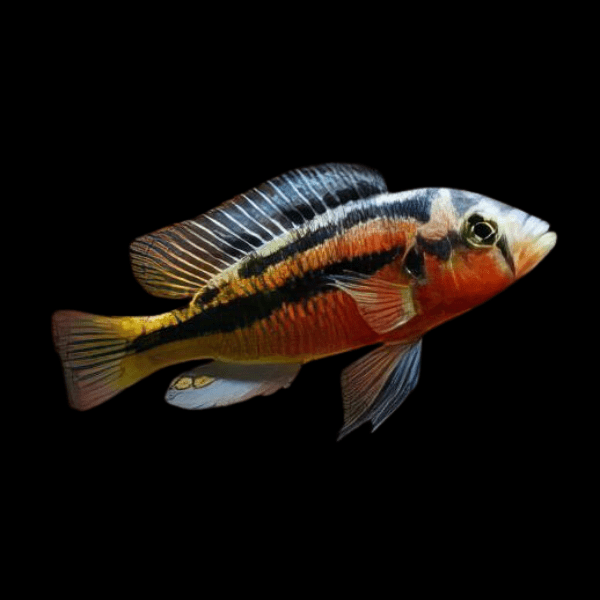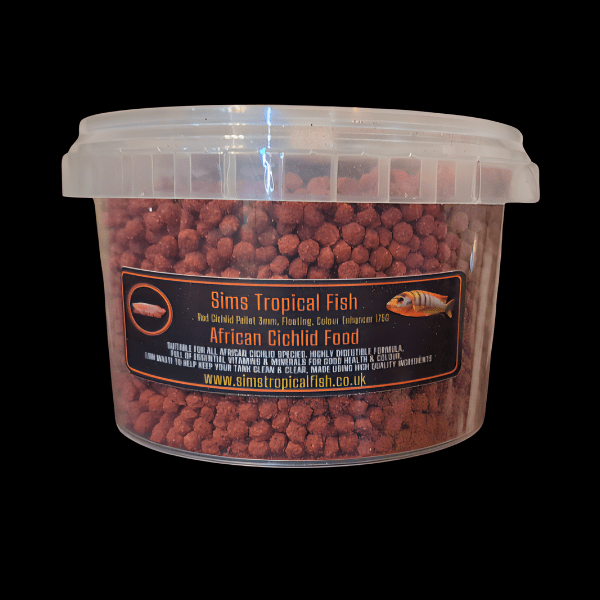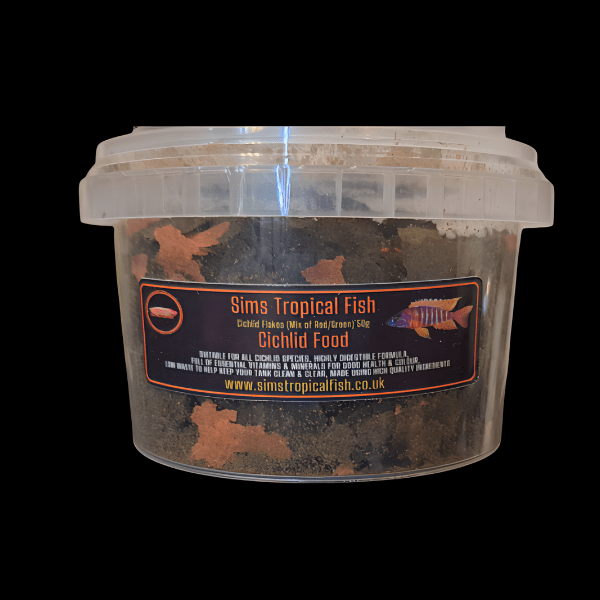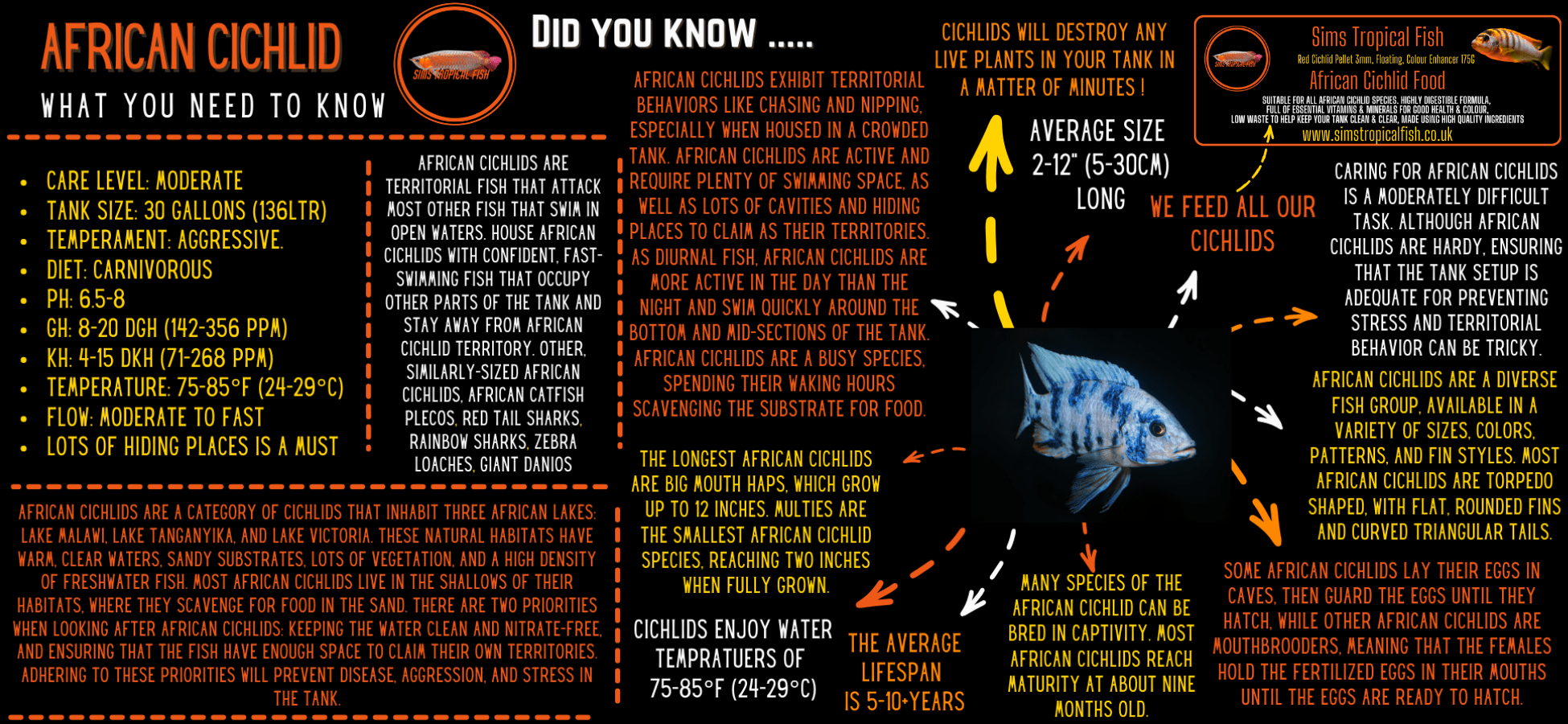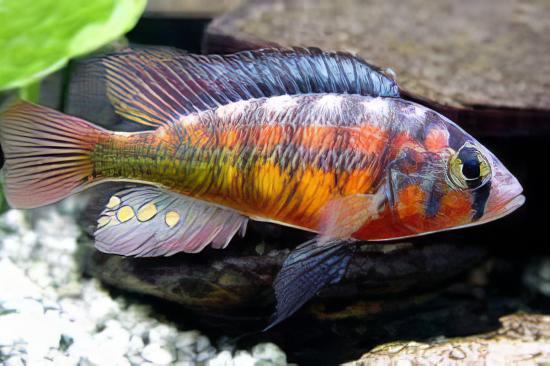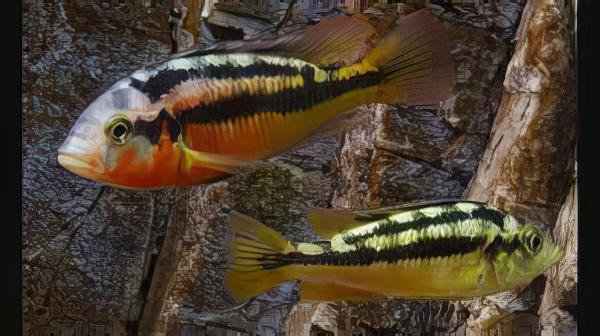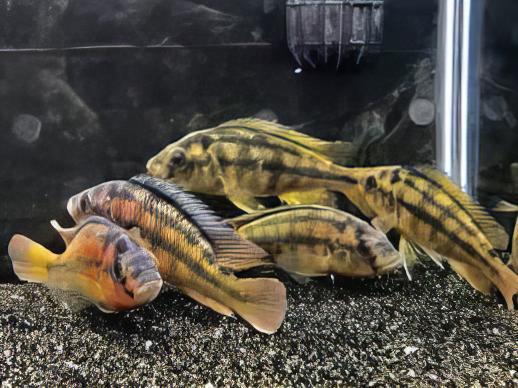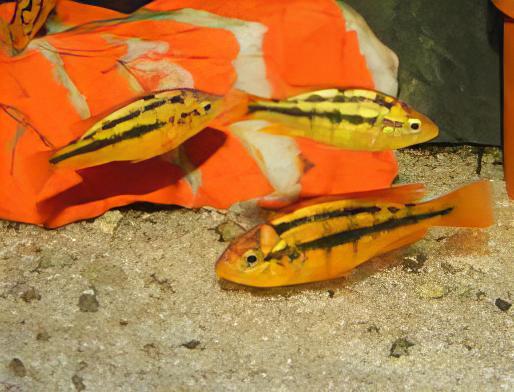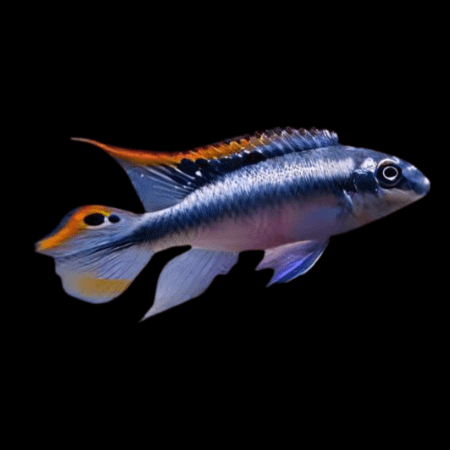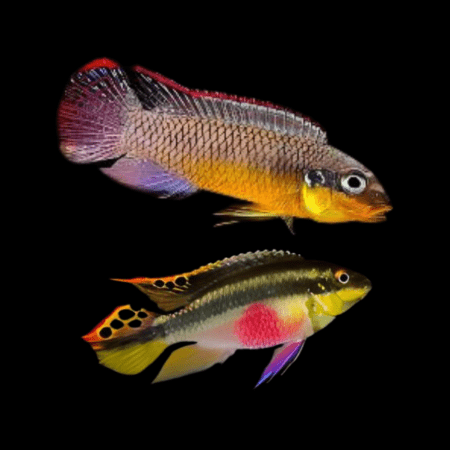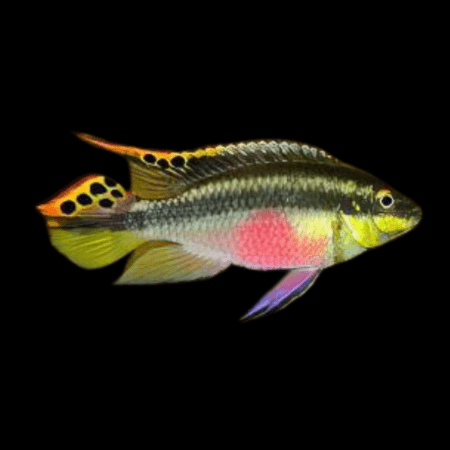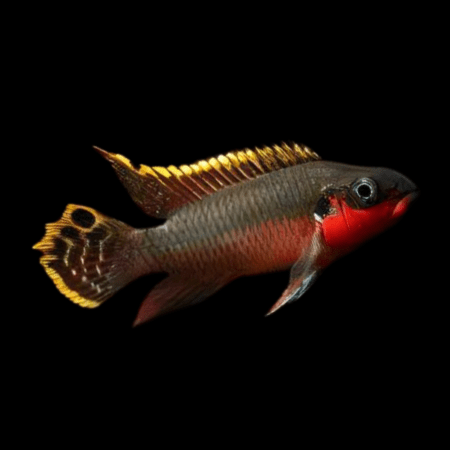Description
Rock Kribensis Cichlid Paralabidochromis Sauvagei
Overview
Synonyms: Paralabidochromis sauvagei, Ctenochromis sauvagei,
Distribution: Lake Victoria
Maximum Size: 12cm (5″)
Temperature: 24-26°C
Water Parameters: Hard, alkaline water essential. pH: 7.5-8.5, KH: up to 25 degrees.
Compatibility: Specialist community
Sexual Dimorphism: Males are larger and more colourful
Feeding: Flake, granules, cichlid pellets and frozen foods
Description
Named after its similarity to the familiar dwarf cichlid, this is a very different fish and comes from the sandy litoral zone of Lake Victoria, where rocks offer shelter. Like all of the endemic cichlids from this lake, wild populations were almost driven to extinction by the introduction of the highly predatory Nile perch (Lates niloticus) and aquarium populations are important to their continued survival.
Care
The aquarium should be spacious and aquascaped with rocky outcrops which break the sightline and enable territorial fishes to avoid one another. These structures should be built with the purpose of creating many crevices for the fish to explore but constructed in such a way so as to keep the rocks stable if the fish start to dig around and underneath them. Filtration should be efficient, with moderate water flow and a good level of oxygenation. Regular partial water changes will help keep nitrate to a minimum. Victorian cichlids are not overly aggressive and should be kept in groups, ideally with 2 or more females to every male. Suitable tankmates could include some of the more easy going mbuna or peacocks from Lake Malawi, but do research individual species thoroughly to ensure compatibility.
Having been known as Paralabidochromis sp. ‘Rock Kribensis’ before being described as sauvagei, it seems that this fish finds itself back in Haplochromis until the taxonomic situation is resolved.
Feeding
A good quality flake or granular food should be supplemented with a variety of frozen foods such as bloodworm, white mosquito larvae, daphnia, vitamin-enriched brineshrimp, and Mysis shrimp. Live foods are eagerly accepted.
Breeding
This species is easily bred in the home aquarium. When ready to spawn, the colouration of the male will intensify and his aggression level will heighten. He will choose and clean a spawning site, then display to the female fish until one accepts him. He can be rather aggressive in pursuit of a female, so spawning should always be attempted in a harem situation where the male is outnumbered by females and aggression is dispersed amongst the group. When a female is receptive, the pair will circle each other in a head to tail manner a number of times, until the female deposits her eggs. These are deposited just one or two at a time and after doing so, she immediately turns around and picks them up. At the same time, the male will rotate so that he is almost on his side, at the same time shaking and extending his anal fin, releasing his milt. The female sees the egg spots on the male’s anal fin and attempts to pick up those dummy eggs whilst she is picking up the real ones that she deposited, and at the same time taking in milt. This is the method of fertilisation, and this ritual may go on for some time until the female is spent of eggs. She will incubate the eggs in her mouth for up to 3 weeks before releasing free-swimming fry, which can immediately be offered baby brineshrimp (Artemia nauplii) and crushed flake food.
